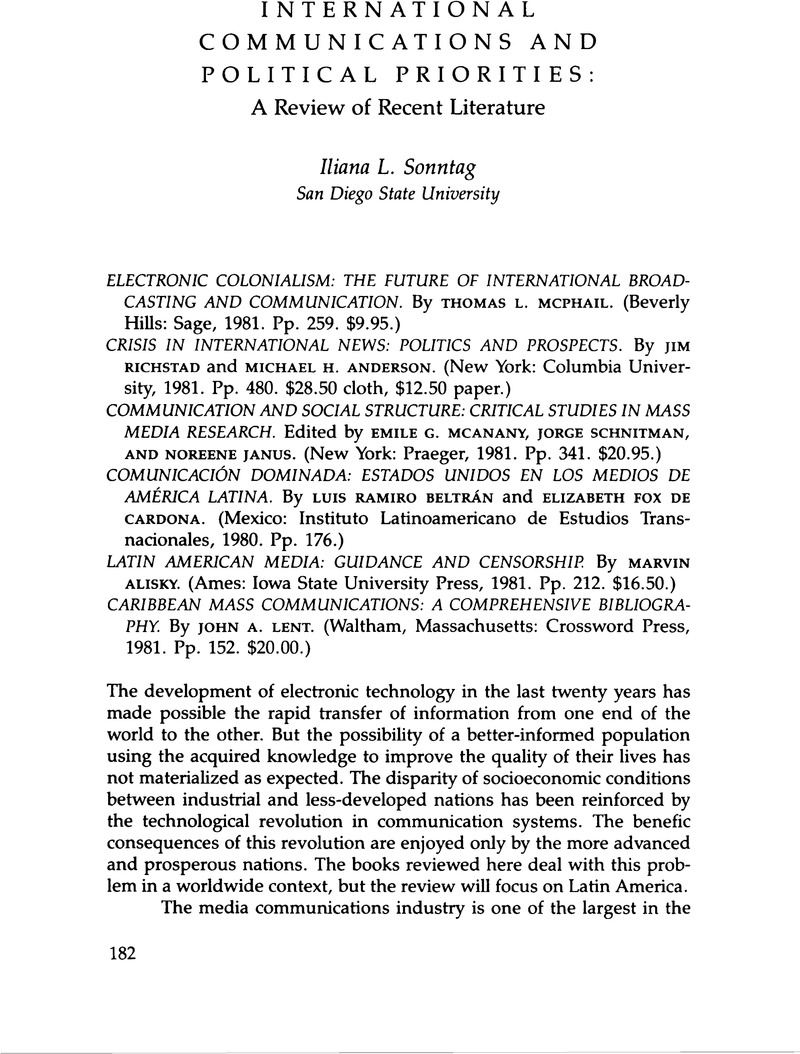Article contents
International Communications and Political Priorities: A Review of Recent Literature
Review products
Published online by Cambridge University Press: 24 October 2022
Abstract

- Type
- Review Essays
- Information
- Copyright
- Copyright © 1984 by Latin American Research Review
References
Notes
1. Eleazar Díaz Rangel, Pueblos subinformados: las agencias de noticias y América Latina (Caracas, 1967). This study mentions fifteen agencies.
2. McPhail's Appendix A is a list of “Alignments of the Nonaligned” that is divided into three groups: radicals “generally leaning towards Russia or China” (Cuba), conservatives “usually tilting towards the West” (Argentina and Bolivia), and independents “remaining unaligned with any superpower” (Nicaragua, Panama, and Peru). This categorization leaves the remaining countries ungrouped. The data comes from Newsweek, 17 September 1979, p. 50. At the New Delhi meeting of the nonaligned in March 1983, Colombia and Ecuador were listed as members by Latin America: Weekly Report, 25 March 1983, with Brazil, Mexico, Venezuela, and Chile listed as observers.
3. For an in-depth analysis, see McPhail, pp. 207–39, and Richstad and Anderson, pp. 380–427. The McBride Report also appeared as a book entitled Many Voices, One World (UNESCO, 1980).
4. Alisky points out that regulation of scarce paper is one means that governments use to effect censorship of newspapers.
5. Ariel Dorfman and Armand Mattelart, How to Read Donald Duck: Imperialist Ideology in the Disney Comic (New York, 1975); and Armand Mattelart, “El Imperialismo en busca de la contrarevolución cultural: Plaza Sésamo, prólogo a la telerrepresión del año 2000,” in Comunicación y Cultura (Santiago de Chile) 1 (July 1973): 146–223 (cited by Beltrán and Cardona).
6. Gita Jane Wilder, Gerry Ann Bogatz, and Samuel Ball, The Sesame Street Generation: The Year After (New York: Children's Television Workshop, 1971).
7. Alisky includes Costa Rica, a country that enjoys freedom of the press, as an exception in his chapter entitled “Censored Central America,” rather than putting it in the chapter with other countries that suffer no censorship.
- 2
- Cited by




